Sometimes a player is just born in the wrong era. They can have all the components necessary to be great in one time period while going underappreciated in their own. Adam Dunn only made two All-Star games in his career and never finished higher than 21st in MVP voting yet from 2004 to 2014 he averaged 39 HRs, 89 runs, and 99 RBIs with a 15.6 BB% and a 29.1 K%. For his career, he fell 38 HRs shy of 500. In his day, he was considered an incomplete hitter thanks to his career .237 AVG. He was the original three true outcomes slugger. Today we have Joey Gallo, Pete Alonso, Brandon Lowe, Joey Votto, Max Muncy, Matt Olson, and even Shohei Ohtani (I know but peep Dunn’s 2004 and 2007, they were pretty similar to Ohtani’s 2021 season without the pitching and stolen bases) who were all similar three true outcome hitters in 2021. Dunn was just ahead of his time.
It can also work backwards. You can be a player who was born too late to be appreciated. That’s what has happened to Guardians outfielder Myles Straw. In his first full season in the majors at 26 split between the Astros and the Guardians he put up decent numbers:
| PA | AVG | OBP | SLG | R | SB | HR | BB% | K% | wOBA | wRC+ | OOA | OOA (OF) | |
|---|---|---|---|---|---|---|---|---|---|---|---|---|---|
| 638 | 0.271 | 0.349 | 0.348 | 86.0 | 30 | 4 | 10.5 | 19.1 | 0.311 | 98 | 12th | 4th |
While that looks like a weak line amongst today’s players, it feels like it would fit in nicely amongst the stat lines of Kenny Lofton, Marquis Grissom, Brian Hunter, Deion Sanders, Otis Nixon, Tom Goodwin, Steve Finley, and the other great speed and defense-first slap-hitting centerfielders of the steroid era. Straw was just born too late. This doesn’t mean he’s a bad player though. It means that he’s likely going to be overlooked in terms of his value (both in real life and fantasy baseball) because he doesn’t hit for power. I’ll mostly be looking at Straw’s value to the Guardians, the real-life team, but at the end, I’ll also dive into his fantasy value a bit.
When Cleveland traded for Straw at last year’s trade deadline, it understandably flew a bit under the radar. The Guardians outfield has been a wasteland really since the days of Grady Sizemore and Shin-Soo Choo, so a soft-hitting, speedster in an era where stolen bases are devalued didn’t really move the needle all that much. The thing is, Straw played really well once he got to The Forest City. Aside from playing excellent defense in CF, he posted a solid stat line in Cleveland:
The first thing to note about Myles Straw is his plate discipline and bat-to-ball skills. Straw possesses an elite eye at the plate:
Let’s dive into the rest of his profile. I want to talk about Straw’s power potential and his batting approach. I highly doubt at any point that Straw is going to develop big-time power but again the biggest goal is for him to get on base in scoring position for the hitters behind him so we mostly are interested in doubles and triples. Straw is an all-fields slap-hitter and interestingly enough, he’s ended up in the perfect place for his batting approach.
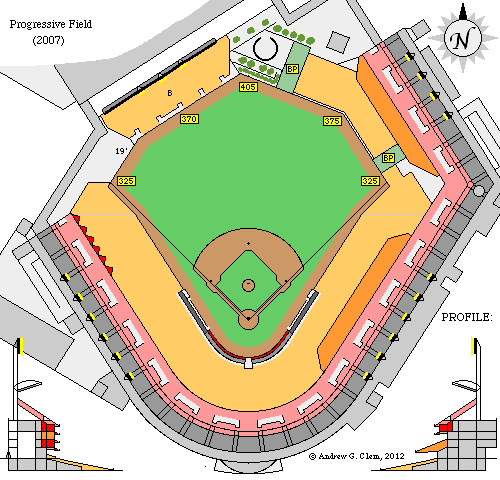
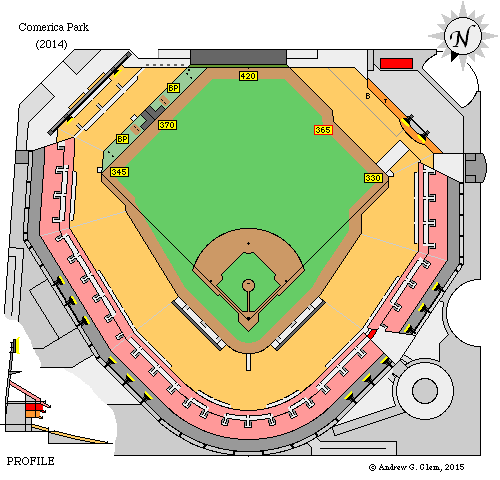
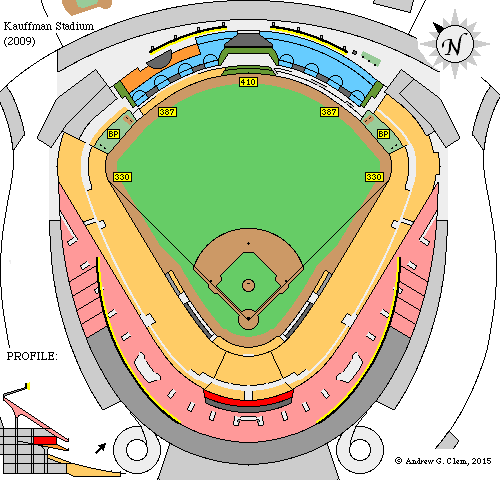
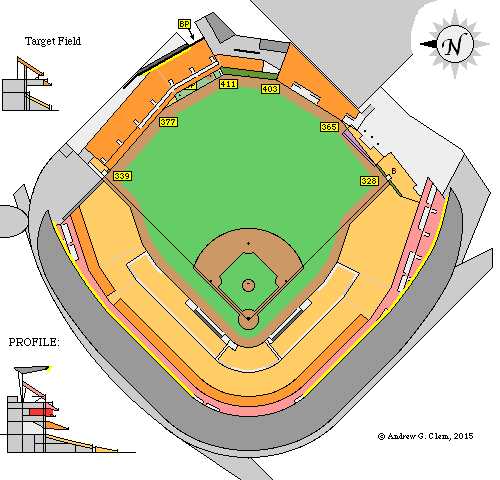
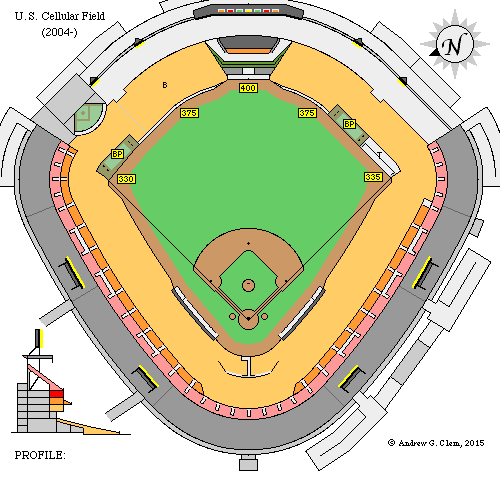
You can see there is just a ton of space in all those outfields, especially in the power alleys. If you look at Straw’s extra-base hit spray chart from last year you can see how he turns all that real estate into doubles and triples using his speed.
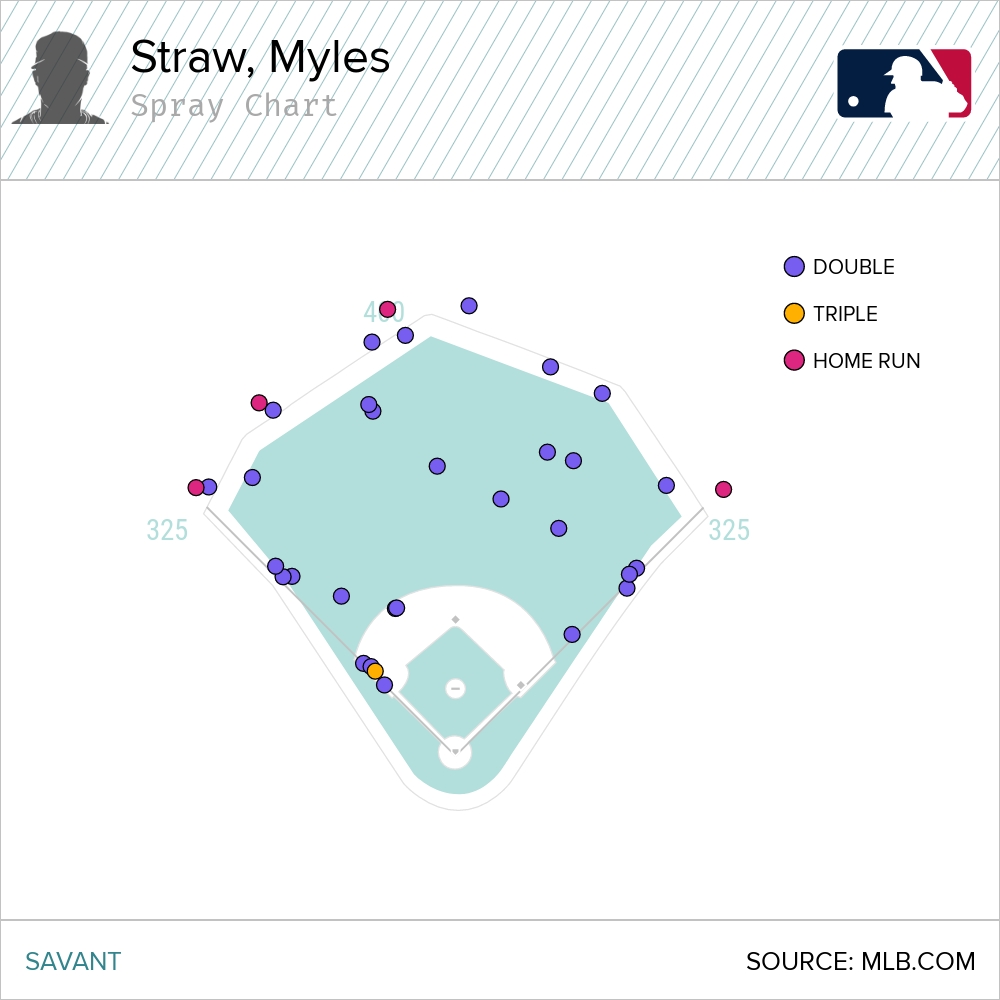
You can see here that the majority of Straw’s extra-base hits came either in those power alleys or down the line and with such big outfields to hit in. With his speed stretching hits out, he could legitimately find himself in a situation where he can create power rather than hit for it. To back that up here are the Statcast park factors for all those parks:
You have to think that this means good things for Straw’s power numbers, even if it doesn’t result in more balls going over the fence. This is supported even further by Straw’s performance once he got to Cleveland where he hit 18 of his 32 extra hits in just 59 games in August, September, and October after coming to the Guardians.
The second reason I like his approach is that Cleveland tends to do well with hitters that fit his profile. If you follow the Guardians closely much like me and redheads in college, they have a type. They absolutely love hitters with speed and high bat-to-ball contact rates that hit to all fields with great plate discipline and honestly have shown quite a bit of success developing them.
I wish I could get plate discipline numbers for minor leaguers but you can see here there are a ton of these types of players that are either in or have gone through their minor leagues. Even Amed Rosario and Andres Gimenez, who came up in the Mets system, share many of those traits. This is encouraging as this means they likely feel like they know how to get the most out of these types of players. I want to focus though on the obvious standout names on this list. That’s right, should-have-been-MVP Jose Ramirez and former Guardians Francisco Lindor and Michael Brantley. If you were to peruse their scouting reports when they first joined the league you’d see snippets such as these:
Jose Ramirez:
“Ramirez’s speed and on-base skills are his biggest assets. He has a smooth swing from both sides of the plate and sprays line drives to all fields. He does have some pull-side power, more so as a righthanded hitter, but home runs aren’t part of his game. Ramirez excels at working counts and rarely chases.” – Baseball America in 2014
“At the plate, he takes line-drive swings and makes consistent hard contact to all fields. He has outstanding hand-eye coordination and feel for the strike zone, which along with his speed allows his hit tool to play up. A switch-hitter since age 13, he’s a little more comfortable from the right side–his natural side–but the club is confident he’ll be a factor from both sides of the plate. Power is the one tool that won’t be Lindor’s forte, though he did show more of it last season than ever before.” – Baseball America in 2015
“He has an easy, compact swing and a good two-strike approach. He pairs his speed with good instincts on the basepaths, tying for the IL lead with 46 steals while getting caught just five times, including a perfect 33-for-33 against righthanders. His speed is also an asset in center field, where he improved his reads and routes to become a solid-average defender with a chance to get better. Brantley has well-below-average power, though he has the size to develop more pop. He doesn’t use his legs much in his swing, but more power could come once he learns to work his lower half, leverage the ball more consistently and learn what pitches he can drive. ” – Baseball America in 2010
Now by all means I do not mean this to pile on to Baseball America, they’re the best in the business for this sort of analysis and this was genuinely their skillsets in the minors. I include them here to demonstrate how Cleveland has had success with this type of hitter. To drive the point home let’s add in Myles Straw. First from 2018:
“When he was graduating high school, Straw didn’t have many options to play college baseball. But St. John’s River (Fla.) JC took a chance on him and once he was there Straw impressed Astros scout John Martin with his speed and bat control. He then went out and led the minors in batting (.358) in 2016. Straw’s approach is unique to say the least. A righthanded hitter, he peppers right field with an inside-out swing that leads to plenty of contact. Encouragingly, Straw showed a developing ability to yank the occasional pitch in 2017. ”
and in 2019:
” Straw’s opposite-field approach rarely makes him a threat to hit the ball over an outfielder’s head. That approach has worked so far, and he’s steadily drawn walks despite lacking the power to frighten pitchers who are behind in counts. Straw handles velocity and doesn’t get the bat knocked out of his hands despite his bottom-of-the-scale power, projecting as an above-average hitter.”
That all sounds familiar doesn’t it? Cleveland has a bit of a track record taking hitters like this and finding success developing power for them without affecting their other elite skills. Take a look at how these numbers tracked over the first five years of these hitters’ respective careers. First look at their PULL% over that time versus their elite plate discipline and contact numbers.
You can see how each one of them came up to the majors with a low PULL% and increased it every single year? Normally a change towards a more pull-heavy approach is accompanied by a loss in contact and plate discipline and you can see they don’t miss a beat in that department while seeing an overall increase in ISO and doubles power. Again this implies that Cleveland has some skill in developing hitters in this manner.
Why is this important for Straw? Because he’s pretty good when he pulls the ball throughout his career with a .391/.391/.543 slash line with a .399 wOBA and .152 ISO. This is all speculation of course since I am not privy to the Guardians’ development plans for Straw. I don’t think they completely want Straw to get rid of his all fields approach but even incremental improvement in this area could go a long way to increasing his doubles output next season and tack on a few more home runs as well.
What would that look like? While I love Jose Ramirez and Francisco Lindor, I obviously don’t expect Straw to start putting up 30 HR MVP caliber seasons like they did. That’s both an unreasonable set of expectations for Straw and took close to 3 years or so with the team before they completely made that leap. I do think though that Michael Brantley could be a reasonable comp for his development along these lines. I think they had similar hitter profiles and approaches when they came up and Brantley is a more extreme groundball hitter which is similar to Straw as well. Specifically, I think of the leap Brantley made in year 4 and year 5 in the 2012 and 2013 seasons. 2012 is the year Brantley got his first full year of at-bats and put up a .288/.348/.396 slash line. He hit 6 home runs in 2012 but made jumped up to 10 HRs the following season and I think I could see a similar leap path for Straw in 2022 and 2023. 10 might be on the high end of expectations but if he can get to a place where he hits 8 to 10 home runs with a .350-ish OBP and 30 to 40 stolen bases, he is going to score a ton of runs for Cleveland. Pair that with really good defense in CF and that’s a job well done leading off in The Land.
Fantasy Implications
Last year Myles Straw ended up the 69th best hitter in fantasy baseball according to ESPN’s Player Rater, in a large part due to his 30 stolen bases. While that feels like a ceiling to his value in 2022 it’s important to remember that he spent April through July batting 8th in the Astros order. As I mentioned before though Straw is currently slated to lead off every day for Cleveland which should add a huge chunk of additional at-bats and given his ability to get on base, should mean even more stolen base opportunities. That’s before you factor in that Cleveland is not shy about stealing bases. In 2021 they were 3rd in the league in total stolen bases while Houston was 27th. This should indicate that the Guardians will not hesitate to unleash Straw on the base paths any chance they get. Would I be shocked if he surpasses that 30 SB threshold and ends up closer to 40? Given the additional at-bats and his speed, I wouldn’t be surprised at all. Only Whit Merrifield and Starling Marte had more than 35 stolen bases last year. If he pulls that off and approaches 100 runs scored he could easily end up with top 50 value in 2022 by the time all is said and done. So where is he going in drafts right now? His current NFBC ADP sits at pick 133.5. In 12 team roto or categories leagues that translates to roughly the 11th round. Even if he only returns the same value as last year that’s a 60 pick value. If he keeps progressing and jumps into the top 60 that’s a fifth-round value you can pick up in the double-digit rounds. That’s the kind of value that wins you leagues, especially if you find yourself falling behind in SBs early on in your drafts or go pitching heavy early on. This feels like a no-brainer.
Photo by Keith Gillett/Icon Sportswire | Adapted by Justin Redler (@reldernitsuj on Twitter)
